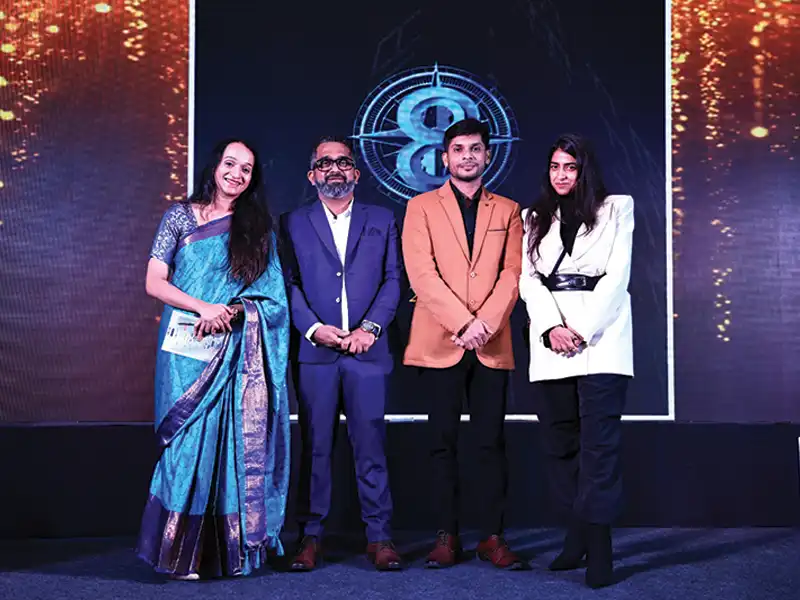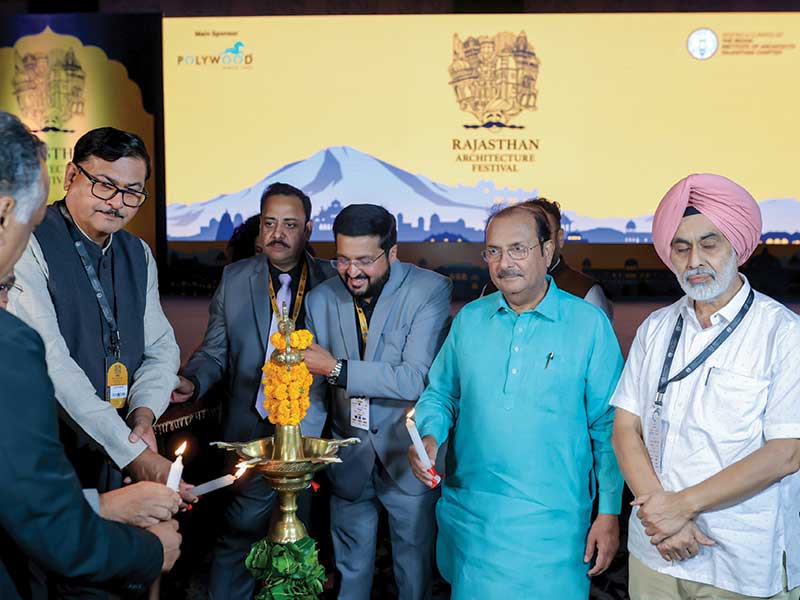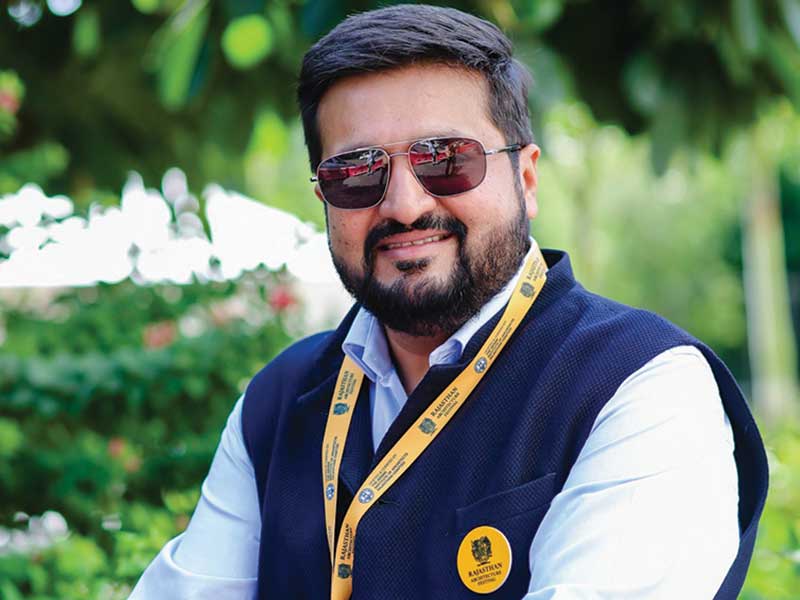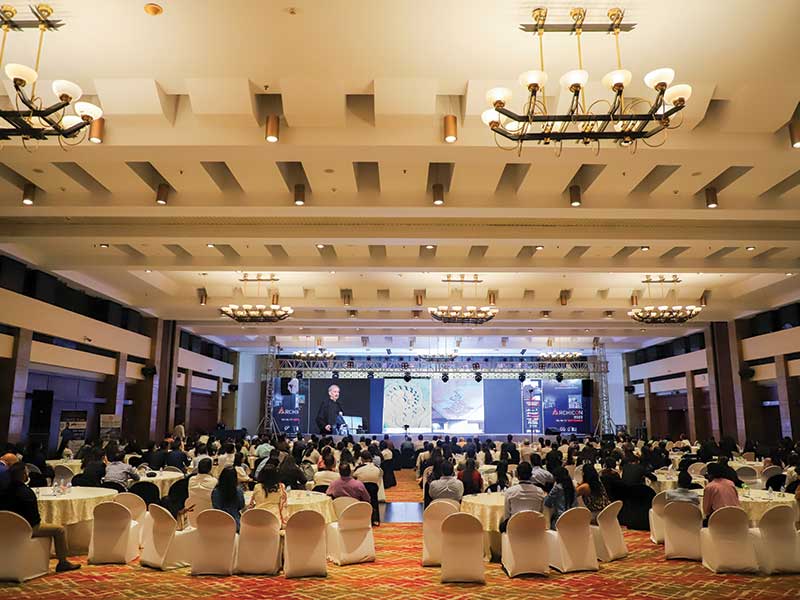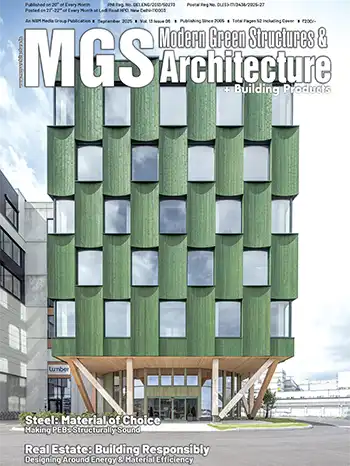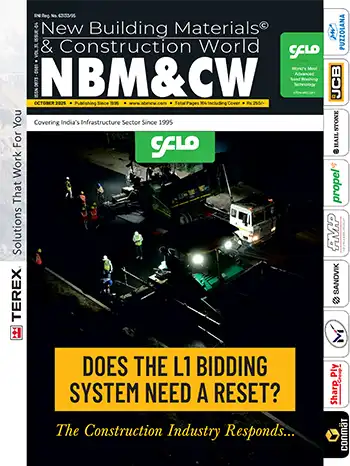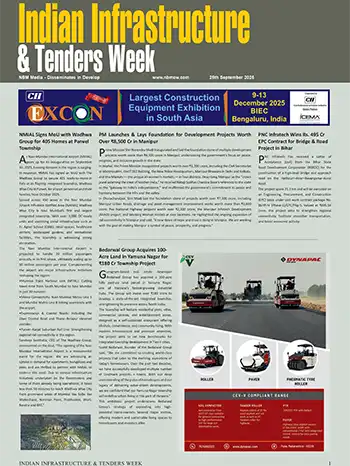 Ar. Liju TV, Secretary – IIA Kannur Center and SRC convenor, Ar. Vinod Cyriac – Chairman, IIA Kerala Chapter, Ar. Vilas Avachat – President IIA, Ar. Sajo Joseph – Chairman IIA Kannur Center
Ar. Liju TV, Secretary – IIA Kannur Center and SRC convenor, Ar. Vinod Cyriac – Chairman, IIA Kerala Chapter, Ar. Vilas Avachat – President IIA, Ar. Sajo Joseph – Chairman IIA Kannur CenterThe event commenced with an inaugural ceremony graced by the virtual presence of Kerala’s Hon. Tourism Minister, P.A. Muhammed Riyas, who inaugurated the conference. Distinguished IIA dignitaries, including National President Ar. Vilas Avachat, Vice President Ar. Jitendra Mehta, National Hon. Treasurer Ar. Sudhir B Pillai, and Immediate Past President Ar. C.R. Raju, lent their august presence, setting an inspiring tone for the event.
IIA Kerala Chapter Chairperson Ar. Vinod Cyriac inaugurated the event with a welcome address, setting a tone of inspiration and unity. This was followed by insightful speeches from IIA Kannur Centre Chairperson Ar. Sajo Joseph, SRC Convener Ar. Liju T.V., and IIA Kerala Chapter Vice Chairperson Ar. Monolitha Chatterji, each eloquently articulating the shared vision and aspirations of the conference.

Wayanad, with its unique ecological and cultural significance, provided a meaningful setting for the conference. The region’s recent experience with devastating landslides underscored the need for disaster-resilient and adaptive architectural solutions. Against this backdrop, the event highlighted architects’ role in creating eco-friendly, technologically advanced designs that address the challenges posed by environmental changes.
The conference saw an impressive lineup of national and international speakers, including 2016 Pritzker Prize winner Ar. Alejandro Aravena from Chile, and other distinguished speakers who shared insights on climate-resilient design and social responsibility of architects. The sessions were tailored to address the complexities and design challenges in ecologically sensitive regions, referencing the recent Wayanad incident to provide real-world context.
The two primary themes at the conference: “Humanity and Society, and Humanity and Innovation” explored the role of architects in shaping societal norms and lifestyle patterns, emphasizing how the built environment influences daily life, behavior, and social interaction. Resilient architecture was a core focus, as the architects shared their commitment to creating spaces that inspire, connect, and contribute to a sustainable future.
The session on Humanity and Innovation examined ways in which technological advancements like immersive technology and 3D printing are transforming architectural practices. Experts highlighted how these innovations are bridging the gap between imagination and reality, pushing the boundaries of design. The discussions offered valuable insights into modern tools and techniques that facilitate experimental, dynamic architecture.
Attendees also witnessed an exhibition showcasing cutting-edge building matefrials. Guided nature trails and bird-watching sessions provided an opportunity to explore Wayanad’s natural beauty and diverse bird species. There was also an exciting showcase of local arts and crafts, celebrating regional creativity.
On-site activities and interactive games, cultural programs featuring performances highlighting local traditions, rounded the event’s celebration of both architecture and regional heritage, while fostering a spirit of collaboration and innovation.
The first day set the tone with impactful presentations and discussions. Architect Vinu Daniel showcased his work with eco-friendly materials such as mud and debris. His innovative designs emphasized context-sensitive and sustainable solutions, rooted in collaboration with local communities and stakeholders.
 Architect Kalpana Ramesh
Architect Kalpana Ramesh Architect Harsh Vardhan
Architect Harsh Vardhan Architect Thisara Thanapathy
Architect Thisara Thanapathy Architect Pratik Dhanmer
Architect Pratik DhanmerThe day culminated in a panel discussion on humanity and society, featuring Kalpana Ramesh, Harsh Vardhan, Thisara Thanapathy, and Pratik Dhanmer. The conversation revolved around how architects can drive societal change by addressing issues like social equity, environmental responsibility, and cultural preservation.
Alejandro Aravena, renowned for his socially responsible designs, shared compelling insights into how architecture can address pressing social issues, particularly in underserved communities, inspiring the audience with his people-centred approach to design. His “Half a good House” concept for community housing was well appreciated; it could be further analysed for housing solutions.
 Panel Discussion on Humanity and Society - Ar. Pratik Dhanmer, Ar. Thisara Thanapathy, Ar. Harsh Vardhan, Ar. Kalpana Ramesh, Dr. Soumini Raja
Panel Discussion on Humanity and Society - Ar. Pratik Dhanmer, Ar. Thisara Thanapathy, Ar. Harsh Vardhan, Ar. Kalpana Ramesh, Dr. Soumini RajaThe second day opened with an engaging session by Zameer Basrai, followed by Damir Ussenov, who explored technological innovation in architecture. Their talks led to a vibrant panel discussion on humanity and innovation, featuring Basrai, Ussenov, and Shajay Bhooshan, who discussed leveraging technology to enhance human experiences in architecture.
Deepak Gugarii followed with a presentation on ecological architecture, emphasizing designs that align with natural systems. Anupama Kundoo captivated attendees with her insights into sustainable materials and construction methods, offering innovative approaches for eco-sensitive regions.

The conference concluded with a thought-provoking panel discussion featuring Alejandro Aravena and Bijoy Ramachandran, who explored architecture’s potential to challenge societal norms and foster inclusivity. Their dialogue inspired architects to consider how their work can drive social change and empower communities.
At the event, an exhibition showcased cutting-edge innovation by building material manufacturers technologies, and contemporary design practices. Inter-chapter competitions among the five southern states, included photography, spot sketching, pot painting, quizzes, and a fashion show, infusing a sense of camaraderie and creativity. Workshops on bamboo, mud, and pottery integrated local Wayanad artisans, creating a platform for revenue generation and cultural exchange. Delegates received a curated gift box containing Wayanad’s pepper, honey, and tea powder, embodying the spirit of the region.
 Visitors at the Exhibition
Visitors at the ExhibitionThe closing ceremony was graced by Chief Guest Hon. Minister of Welfare for Scheduled Castes, Scheduled Tribes, and Backward Classes, Shri. O.R. Kelu, along with Guest of Honour Shri. T. Siddique, MLA Kalpetta, and actress Unnimaya Prasad.
This monumental event was orchestrated under the visionary leadership of IIA Kerala Chapter Chairperson Ar. Vinod Cyriac and IIA Kannur Centre Chairperson Ar. Sajo Joseph. The diligent efforts of SRC Convener Ar. Liju T.V., Organizing Secretary Ar. Amith Kamal, and Program Coordinator Ar. Lukman Jaleel ensured seamless execution and resounding success.
 Cultural program
Cultural programThe Southern Regional serves as a premier platform for professional development, knowledge sharing, and networking within the architectural community, exemplifying the transformative role of architecture in fostering resilient, inclusive, and eco-conscious communities. By bridging gaps between humanity and innovation, the event left an indelible mark on the architectural landscape, inspiring a future of responsible and responsible design.
“As architects, we have a profound responsibility to create spaces that inspire and connect, and this conference was a vital platform for sharing ideas and exploring the future of our profession. Together, we can pave the way for a sustainable and inclusive built environment,” said Ar. Vinod Cyriac, Chairperson, IIA Kerala Chapter.
 Ar. Vinod P. Cyriac - Chairman, IIA Kerala
Ar. Vinod P. Cyriac - Chairman, IIA KeralaHow is IIA Kerala Chapter addressing climate-related challenges in the region, technological innovations, and creating sustainable solutions for supporting local economies?
The decision to host the event in Wayanad, a region still recovering from devastating landslides and floods, underscores IIA’s commitment to addressing climate-related challenges and contributing to the region’s recovery. The theme, ‘Bridging Binaries,’ explored the intersection of humanity, society, and technological innovation.Discussions on ‘Half Good Houses’ and ‘Core Houses,’ emphasized adaptability in social housing to accommodate evolving family needs. The integration of climate-responsive designs and community-focused architecture to build resilience in disaster-prone areas. The event underscored the role of architects in creating sustainable solutions while supporting local economies, such as Wayanad’s tourism-dependent community.
What were the key takeaways from the IIA Southern Regional Conference?
Sustainable Social Housing Models: Discussions revolved around ‘Half Good Houses,’ which provide a structurally safe core structure (250-400 sq. ft.) that can be expanded as families grow. This kind of adaptable design, initially conceived by Laurie Baker’s ‘Core House,’ offers flexibility, individuality, and economic sustainability for communities.Climate-Resilient Architecture: The conference reinforced the need for architects to design solutions that address the challenges posed by climate change, such as disaster preparedness and rebuilding strategies and the importance of land use mapping.
Community-Centric Approach: Sustainable housing must integrate essential community amenities like drinking water, waste management systems, and open spaces to create holistic and live-able environments to help strengthen the livelihood strategies.
Architects as Catalysts for Recovery: By designing for resilience and sustainability, architects play a vital role in accelerating recovery efforts, especially for economically and socially disadvantaged groups who take the longest to return to normalcy after disasters.
Bridging Tradition and Innovation: The theme emphasized the importance of combining traditional wisdom with modern technology, such as 3D printing and immersive design tools, to create meaningful architectural solutions.
What impact do events like these have on the Architect and Builder Community at large?
Events like these highlight architects’ responsibilities beyond design, encouraging them to advocate for sustainable, equitable, and resilient urban planning. The adaptable housing model introduced during the conference serves as a prototype for future social housing projects worldwide, balancing immediate needs with long-term sustainability.The conference provided a platform for collaboration among architects, builders, policymakers, and researchers, fostering a culture of shared learning and innovation.
Hosting the event in Wayanad demonstrated how architecture can directly support regional recovery efforts and empower local communities to rebuild stronger and more sustainably. The participation of students and young professionals ensured the transfer of knowledge, inspiring the next generation of architects to embrace design as a tool for societal transformation.

